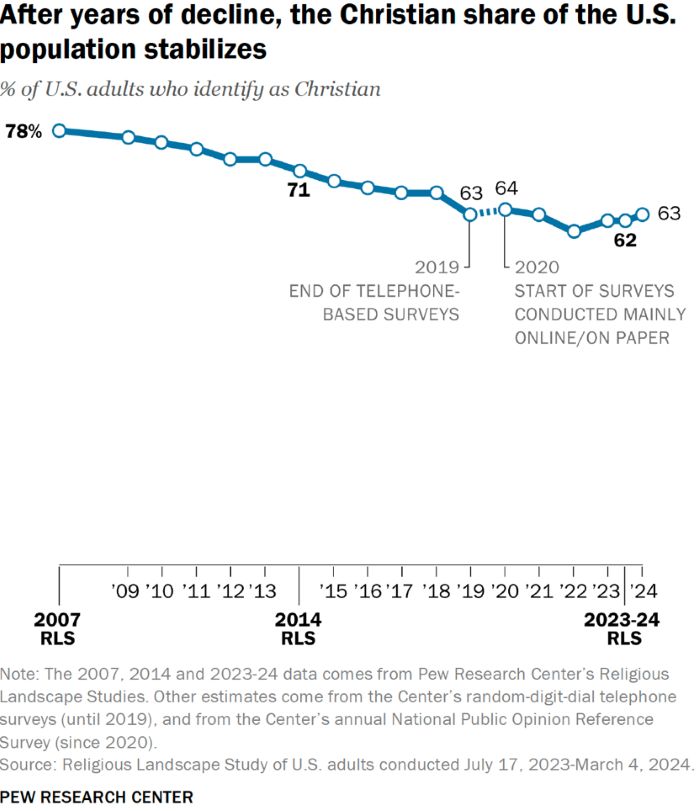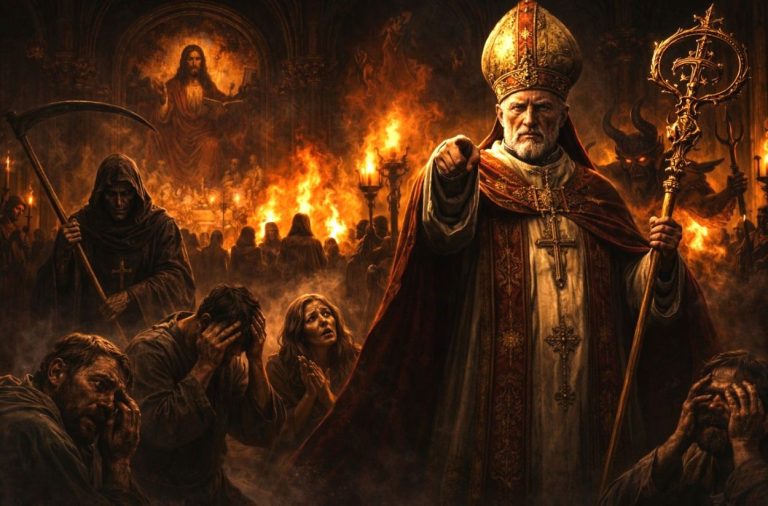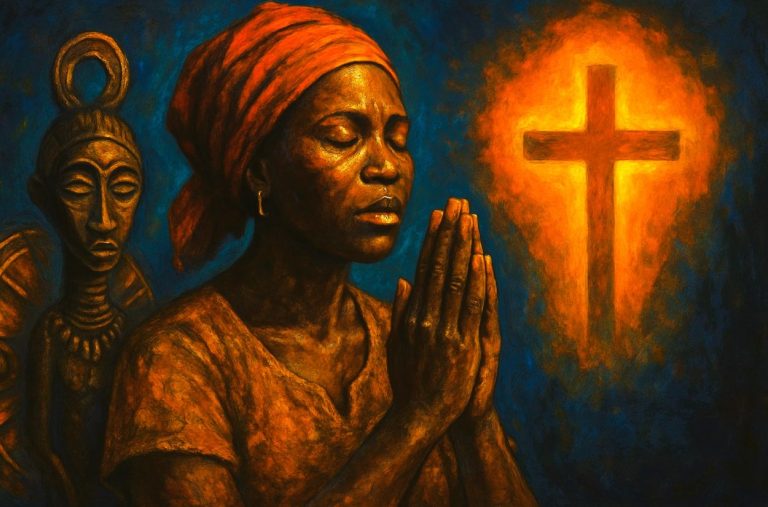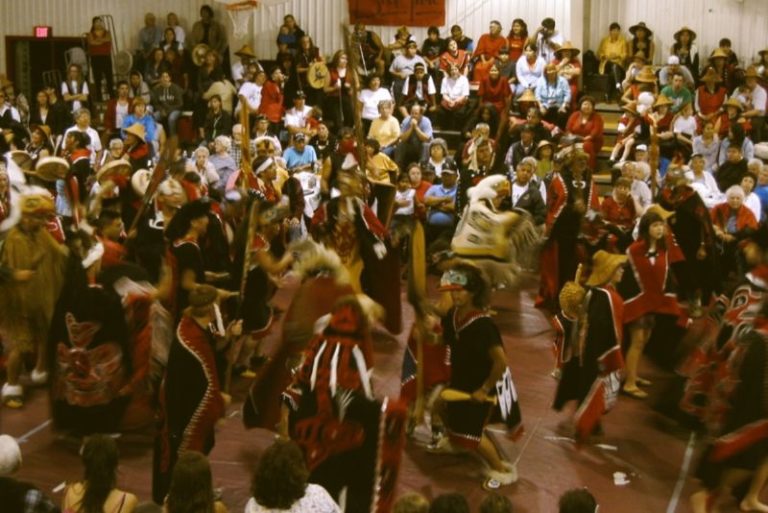

The Christian majority decline looks to continue going forward.
After many years of steady decline, the share of Americans who identify as Christians shows signs of leveling off – at least temporarily – at slightly above six-in-ten, according to a massive new Pew Research Center survey of 36,908 U.S. adults.
The Religious Landscape Study (RLS) is the largest single survey the Center conducts, aiming to provide authoritative figures on the size of U.S. religious groups because the U.S. census does not collect that information.
We have conducted three of these landscape surveys over the past 17 years, with more than 35,000 randomly sampled respondents each time. That’s enough to paint a statistical portrait of religion not only nationally, but also in all 50 states and the District of Columbia, as well as in 34 large metro areas.

This introductory essay walks through the big-picture trends: evidence both of a long-term decline in American religion and of relative stability in the last few years, since 2020 or so.
The first RLS, fielded in 2007, found that 78% of U.S. adults identified as Christians of one sort or another. That number ticked steadily downward in our smaller surveys each year and was pegged at 71% in the second RLS, conducted in 2014.
The latest RLS, fielded over seven months in 2023-24, finds that 62% of U.S. adults identify as Christians. That is a decline of 9 percentage points since 2014 and a 16-point drop since 2007.
But for the last five years, between 2019 and 2024, the Christian share of the adult population has been relatively stable, hovering between 60% and 64%. The 62% figure in the new Religious Landscape Study is smack in the middle of that recent range.
The largest subgroups of Christians in the United States are Protestants – now 40% of U.S. adults – and Catholics, now 19%. People who identify with all other Christian groups (including the Greek and Russian Orthodox Churches, the Church of Jesus Christ of Latter-day Saints, Jehovah’s Witnesses and many others) total about 3% of U.S. adults.
Both Protestant and Catholic numbers are down significantly since 2007, though the Protestant share of the population has remained fairly level since 2019 and the Catholic share has been stable since 2014, with only small fluctuations in our annual surveys.
Meanwhile, the share of Americans who identify with a religion other than Christianity has been trending upward, though it is still in single digits.

Today, 1.7% of U.S. adults say they are Jewish when asked about their religion, while 1.2% of respondents in the new survey are Muslim, 1.1% are Buddhist, and 0.9% are Hindu.
Religiously unaffiliated adults – those who identify as atheists, agnostics or as “nothing in particular” when asked about their religion – account for 29% of the population in the new RLS. The size of the religiously unaffiliated population, which we sometimes call religious “nones,” has plateaued in recent years after a long period of sustained growth.
Rates of prayer, attendance at religious services also relatively stable
Other standard survey measures contribute to this emerging picture of stability:
- Though down significantly since 2007, the share of Americans who say they pray daily has consistently held between 44% and 46% since 2021. In the new RLS, 44% say they pray at least once a day.
- Similarly, since 2020, the percentage of U.S. adults who say they attend religious services monthly has hovered in the low 30s. In the new RLS, 33% say they go to religious services at least once a month.
Spiritual beliefs are widespread
Moreover, the survey shows that large majorities of Americans have a spiritual or supernatural outlook on the world.
READ ENTIRE ARTICLE AT PEW RESEARCH CENTER


